Late in the afternoon of June 9, 2021, heavy smoke was reported along upper Pack Creek in San Juan County, just upstream from Pack Creek Ranch. As the fire began to move rapidly down the creek bed, the historic ranch and its decades-old cabins and lodge were at risk, as well as a couple dozen newer and very expensive homes. Exacerbated by 40 mph winds, the fire burned century old trees and dense brush, then reversed course, then flipped again. One homeowner described the fire pattern as “squirrely… it took two passes through the ranch.” Fire crews assisted by USFS helicopters hauling water buckets, fought back the fire and saved all but three structures, including the ranch’s pool house.
Then the fire turned on the canyons above Pack Creek and raced up the mountain, all the way to Geyser Pass. When the fire was finally contained, it had burned 8,962 acres.

FIRST…THE SOCIAL MEDIA FIRESTORM…
I first heard about the fire late on the night of July 9, when it was in its infancy. One of the Zephyr’s contributors, Brandon Hill, notified me of a social media report by author Amy Irvine that Pack Creek Ranch was “gone.” In her facebook post, Irvine wrote in part:
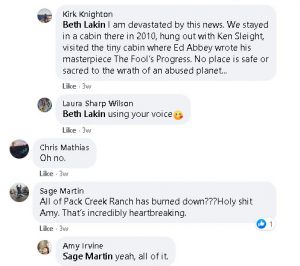
“Tonight the historic Pack Creek Ranch outside of Moab burned….It’s all gone now and this is despite fire plans, despite having water, despite crews and planes dumping retardant when the fire was still small. Because this is not an every day fire. It’s the work of an unending drought caused by climate change that is not coming–it’s here.”
The response on social media was immediate and heartfelt, and her post was shared by thousands, including the facebook page “Edward Abbey Matters.” Abbey had been good friends with owner Ken Sleight and had spent several summers there. His novel, “Fool’s Progress,” was written in the small cabin near the ranch entrance. Hundreds left sorrowful comments. One wrote:
“All of Pack Creek Ranch has burned down?…That’s incredibly heartbreaking.”
Irvine replied, “Yeah. All of it.”
But hours later, Grand County Attorney Christina Sloan responded to the social media posts, writing:
“I just talked to the Sheriff who confirmed at 8:58 am this morning that 2 structures in Pack Creek have burned (1 house and 1 pool house) and 1 flatbed trailer – not 30 as being reported on social media…SJC and Grand County are working on getting more accurate info on social media but the federal fire PIO will lead the greater communication effort…Social media is also ‘reporting’ that they are giving up on Pack Creek to save Spanish Valley. This is not true! No one is giving up on Pack Creek – the Sheriff is there now and the fire teams are still defending structures in Pack Creek.”
Irvine later added Sloan’s update and noted:
“I deleted the other post that said 30 structures had burned and I’m glad to be wrong about that, although residents believe more than one structure is gone. Whatever the case, Pack Creek as a place of history and heart is damaged, and serves as a harbinger of what this hot new world has in store for us.”
The hard facts were somewhat less dramatic than the initial panic suggested. But the result was awful, just the same. While we all talk about humans’ collective responsibility for the consequences of a fossil-fueled world, the damages rendered against our planet are too often the result of a shameful lack of personal responsibility. Nothing could be more tragically accurate than in this case.
It didn’t take long for the San Juan County Sheriff’s office and U.S. Forest Service rangers to pinpoint the cause of the conflagration. A group of picnickers had, for reasons only they could explain, built a campfire in 90 degree heat at the small USFS day use area, and then walked away from it while the fire still smoldered.
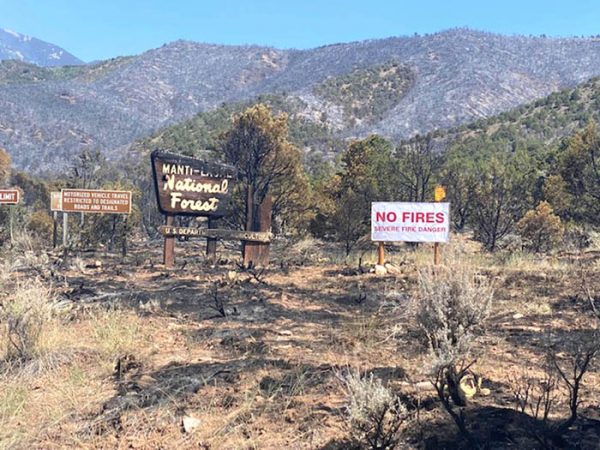
At 3:45 PM, forty mile an hour winds pushed the unattended hot coals into the dry grasses that surrounded the area and within minutes, the entire creek bed, loaded with tinder-dry understory and drought-hungry trees, burst into flames. The fire moved rapidly down the creek bed at a stunning rate. And then, as noted, changed course at least twice.
Regardless of droughts and climatic changes, even now, 90% of ALL fires are human-caused—mostly by sheer stupidity and at times by purely evil arsonists. In this case, it was of course the first option. As of this writing, despite pleas to the public by law enforcement for information leading to the arrest of those responsible for the fire, no suspects have been publicly identified.
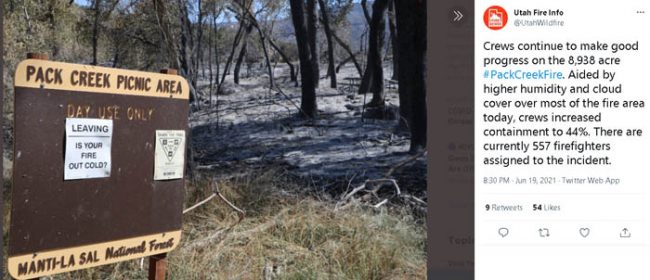
THE FACTS WERE BAD ENOUGH
While Irvine’s early social media posts grossly overstated the damage at Pack Creek ranch, the real destruction, without exaggeration, was indeed heartbreaking. Almost all the majestic cottonwood and box elder trees that lined the creek are gone. All the native shrubs that lined Pack Creek were burned out. It will take generations for Pack Creek Ranch to look as it once did. If ever.
And among all the expensive custom-built structures that have become second homes to many of the ranch’s part-time residents, the one loss that was irreparable and heartbreaking was the destruction of Ken Sleight’s old steel Quonset hut. Its value surpasses, in my mind at least, the most lavish and opulent of the mansions that have been built on the ranch in the last 30 years.
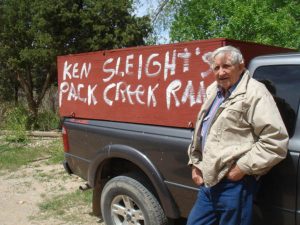
In Ken’s modest hut were thousands of documents, photographs, letters, even brochures and maps and postcards, almost three quarters of a century of history— Ken Sleight’s life— that Ken had saved and cherished for the memories it still provided to him. None of it survived the fire.
The blame for all of these losses, from Sleight’s historical archives, to the trees and critters that perished in the fire, and even to those opulent homes that burned…all of the responsibility lies at the feet of the idiots who left their campfire smoldering. This is the consequence of a decline in our human culture that has little to do with climate change itself. This is more about an increasing lack of awareness in the general public about the fragility of Nature, and about the lack of skills needed to coexist with it.
We have always seen this kind of bewilderingly stupid behavior among part of the human population. But even if the level of carelessness remains the same percentage-wise, the impacts are growing worse because there are so many more humans invading these once remote “secret” places. Calculate the number of uninformed, unknowledgeable recreationists who represent one percent of 10,000 and compare that number to one percent of a million. The sheer number of fools in that one percent is overwhelming.
Sleight talked about the changes ahead in a Zephyr interview in June 2010. We spent the afternoon in that same Quonset. We were surrounded by long shelves and bookcases and file cabinets, filled with his precious archives. A lifetime of memories. Ken talked about the future. He was in a pessimistic mood…
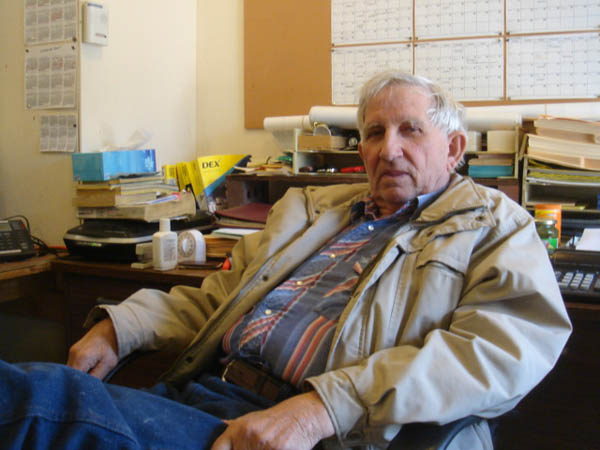
“They keep trying to bring more people here. That spells doom for wilderness. More people. More people. How many times have we talked about that? More parking lots. More of everything. We keep building and building. ‘Improving’ it! Adapting to handle ever increased numbers, all for the comfort of the people. Now everybody associates that with preservation. We’ve got to ‘improve’ it so we can get more people in. And nobody is talking about reducing the number of people.”
“I’ve got an idea for wilderness. Let’s carve up a big section and NOBODY goes in there. Leave it to the animals and nature… Why not just have places on the earth where nobody can go in. Not even scientists!”
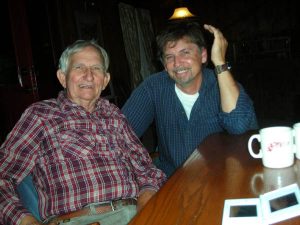
Finally Ken suggested we get out of the Quonset and stretch our legs. But he still had more to say. Ken noted that dramatic changes, even then, were on the way. By 2010, the Sleights had sold much of the ranch to various individuals and now it was administered by a homeowners association. All the owners, including the Sleights, shared the commons. Ken pondered the future…what would it be like? Ken thought about it for a moment…
“Pack Creek Ranch and Moab will be plastic. Nothing but plastic, and Pack Creek with it. Civilization is already headed that way. It IS that way. Plastic is a good word. Plastic individuals. Not really individuals anymore. People will go where they’ve been trained and taught. Control….Wilderness is supposed to be having the space to be free. When we fought for wilderness, we thought it meant big empty places. I really don’t want to be around for what’s coming…”
For better or worse, Ken was around to see the latest example of human stupidity. A friend of Ken’s, filmmaker ML Lincoln, echoed Sleight’s sentiments a full decade after his 2010 warning. After the fire, she told the Salt Lake Tribune that, “people are coming to Moab and leaving their minds at home. They act as if they don’t know what is going on, and they might not……how do you teach people to have respect for the place?”
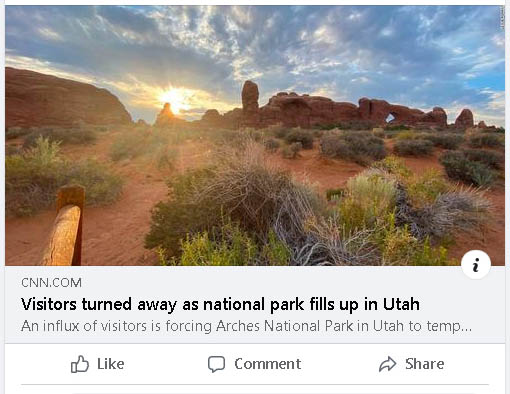
As the recreation industry and its proteges in many mainstream environmental organizations relentlessly pushed to replace the traditional industries of the West with a full-blown “industrial strength” amenities/tourism/recreation economy, national parks were overwhelmed. Lines of cars regularly stretched for miles outside park entrance stations. Arches National Park has actually closed its gates numerous times in 2021, when capacity reached its limit.
Where do those masses of tourists go, who are turned away? They head for those “less used” natural areas around the perimeters of parks like Arches. It’s happening everywhere, from the Grand Canyon to Glacier. And the “users” are an entirely new breed of staggeringly ignorant tourist neophytes, now claiming for their own (and a quick selfie), the “natural world” that they are so thoroughly unprepared to experience.
Sleight was right. Plastic.
THE LARGER PICTURE..A LITTLE BIT OF ‘GOOD’
As devastating as it was, is there anything positive to be gleaned from the fire and its aftermath? For starters while the La Sal Mountain district of the US Forest Service comprises about 200,000 acres, the Pack Creek fire ultimately burned about 9,000 acres, less than 5%. Early reports claimed the fire was on its way to destroying the entire north side of the range and many were convinced that if it crossed Geyser Pass, it would incinerate the south side as well. Through the valiant efforts of the hundreds of firefighters who battled the flames for almost two weeks, the damage was relatively limited. As always, so many of us are beholden to the few.
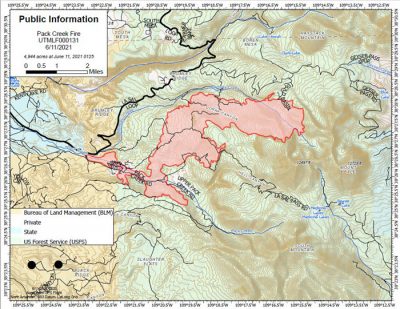
After the fire was contained the USFS began its post-mortem work. According to its final report:
“Burned Area Emergency Response (BAER) team finalized the Soil Burn Severity map for the Pack Creek Fire…The team sampled sites to evaluate soil changes caused by the fire. They collected information on ground cover, canopy consumption, intact roots, and water repellency to better understand soil burn severity.
“BAER post-fire assessment teams use the soil burn severity data to identify risks to human life and safety, property, and critical natural and cultural resources from increased soil erosion, accelerated surface water run-off, and debris flows.”
BAER determined that about half of the area hit by the fire had a zero or low “soil burn severity” impact. About half showed moderate impacts and just 2% were rated high. Consequently, it determined that, “areas located downstream from moderate and high soil burn severity may experience increased rates of erosion, debris flows, and surface run-off following short-duration, high-intensity rainfall events.”
Clearly, a lot of restoration work lies ahead. But it could have been worse.
Ironically, one of the largest wildfires to ever occur in the four corners region also started on the same day, June 9, nineteen years earlier in 2002. The Missionary Ridge fire burned for over a month and consumed 73,000 acres, destroyed 83 structures, and was responsible for the death of one person. Areas north and east of Durango were affected. Later analysis determined that burn severity was moderate or severe across more than 60% of the affected lands. And, like now, that part of Colorado was in the midst of a severe drought.
Years later, the Colorado Conservation Board (CCB) presented a case study called, “How Wildfire Affects Colorado’s Communities.” The article offered some key points to consider and first reminded its readers of two truths that are nowadays lost on the general public.
The first is that “wildfire is an essential part of Colorado’s forest ecosystems;” that it is “a regularly occurring natural process and a cornerstone of Colorado’s forested ecosystems.” This is a concept that only in the last 30 years has been more broadly discussed. In 1988, when the Yellowstone fires consumed a third of the park, critics denounced the runaway conflagration and Park Service officials and scientists alike were condemned for their actions. But ultimately, many came to understand the natural processes at work and the restorative components of fire in an ecosystem. The problem at Yellowstone was that the fires put many historic structures and the tourism industry itself in harm’s way. Since then, an ever-expanding residential and commercial infrastructure has invaded once-empty parts of the western landscape. Those structures now stand in the way of these wildfires too. Just at Pack Creek Ranch alone, there are close to 30 homes, built since 1990, with a value probably exceeding 20 million dollars.
In the CCB report, both points were considered. It noted that, “fire suppression and urban growth have increased wildfire risk.” Here is an excerpt:
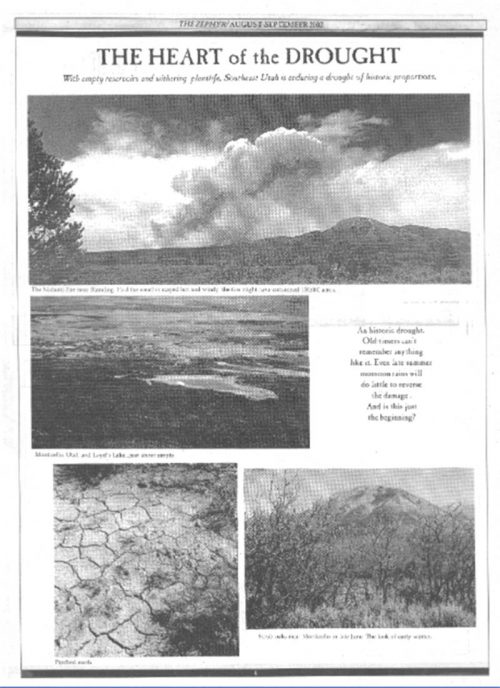
Human development and activity have interrupted Colorado’s fire regime, leaving many communities more vulnerable than ever before. Beginning in 1911, the U.S. Federal Government aggressively suppressed wildfires in the Western U.S. to minimize risk and protect timber assets. Consequently, forest fuel loads grew ever larger, increasing the likelihood of very large fires .
Additionally, population growth has expanded the wildland-urban interface. The wildland-urban interface is a transition zone between wildlands, such as forests, and urban areas where homes and other structures are built. Indeed, the wildland-urban interface is highly vulnerable to wildfire because valued assets are positioned in harm’s way.
These kinds of large wildfires have affected the West at regular intervals for decades. In 2002, we dedicated a page of the Zephyr to the brutal drought that the West was enduring. That summer the Nizhoni fire in the Abajo Mountains, 70 miles south of Moab, burned thousands of acres. Poor summer visibility across much of the west has become an expected phenomenon. I can personally recall those kinds of low visibility periods going back 40 years. But certainly conditions in the West are getting worse.
CCB warned that with climate change, growing populations, and the encroachment by urban and residential development, the forests of Colorado would become even more vulnerable to fire in the years and decades ahead. The same conditions exist in every western state, all the way to the Pacific Coast. And yet the parts of the West most vulnerable to wildfires, the most drought-stricken, the states most stressed by water shortages and electrical blackouts, are also the fastest growing states in the country. How do we deal with that?
Jim Stiles is Founding Publisher and Senior Editor of the Canyon Country Zephyr.
To comment, scroll to the bottom of the page.
Zephyr Policy: REAL NAMES ONLY on Comments!
Don’t forget the Zephyr ads! All links are hot!





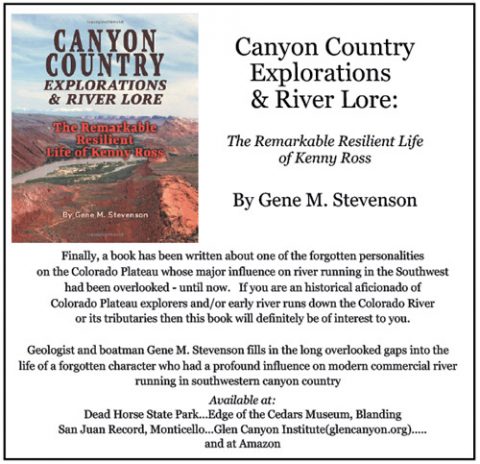
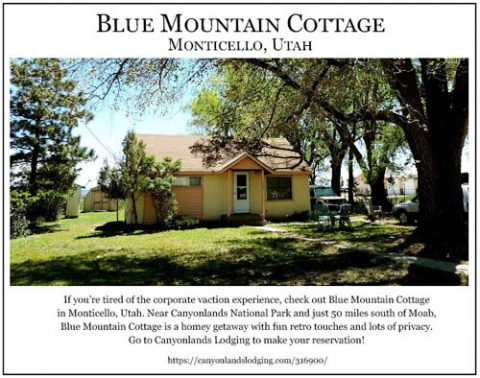
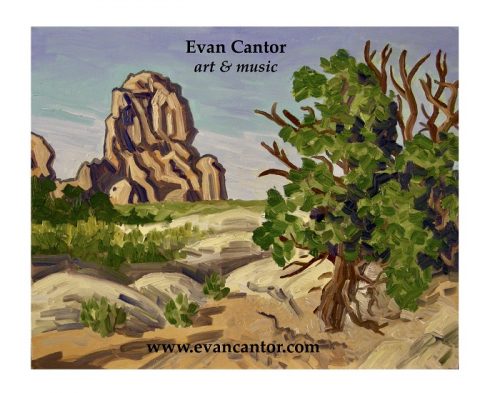
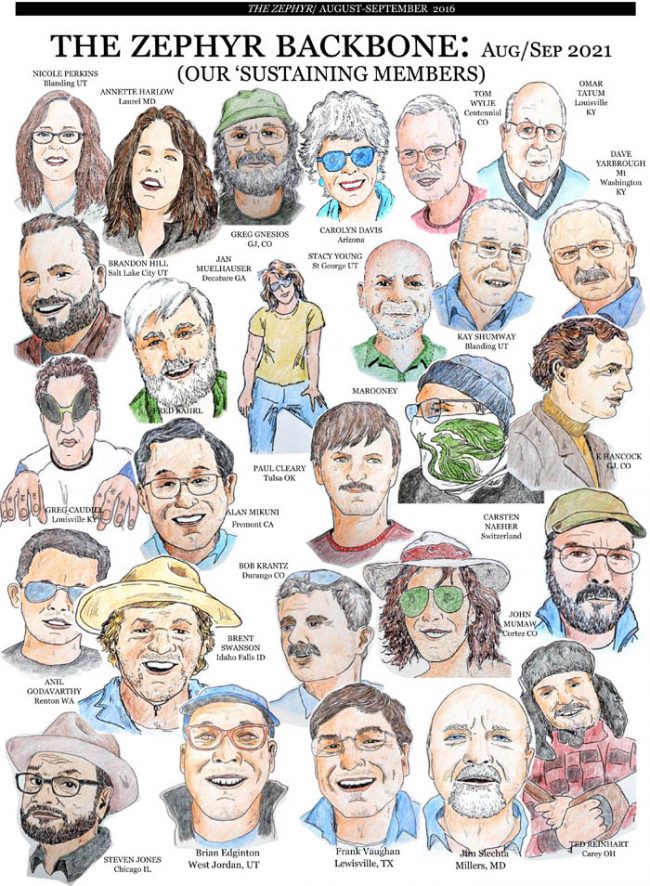
Hi Jim, Pack Creek flashed again last night, first reports are that this flood was more severe than the first one.
Take Care,
Dave
I saw the video; Yikes!
Mud slides from rain on 2020 burn scars have been wreaking havoc with I-70 in Glenwood Canyon and hi way 14 in the Cache La Powder Canyon all summer long (so far…it’s only August 2nd). Colorado Dept of Transportation claims that when Glenwood Canyon is closed, their recommended detour (hiway 40 via Steamboat Springs) for people attempting to drive from Denver to Grand Junction adds 4 hours to the trip. I don’t know if that’s actually true, but it sure is a hassle and I’d hate to see how much traffic is attempting Independence Pass at those times. After the fires of 2020, at least the semi-truck drivers know to stay off Independence Pass.
Following up… just the other day our local news reported a Greyhound bus stuck on the Coffee Pot Spring road. GPS had indicated this route as a detour around the still closed Glenwood Canyon highway. Yeah, it’s a detour alright. It’s also a narrow dirt road with thousand foot dropoffs, complete with hairpin switchbacks and a long stretch of 4-wheel drive trail…
I worked for 30 years in one of those big eastern cities. Never took a vacation but spent a lot of time with Abbey’s books. Upon retirement and before starting a second career as a schoolteacher I finally realized a dream of visiting Arches. I stayed at Pack Creek. In fact I stayed at the little cabin where you were warned to duck your head before entering. I really wanted to talk to Mr. Sleight but the only time I saw him was at night when I saw him coming back from a ride with a client. It would have been rude of me to strike up a conversation with him.at that time. A missed chance. When I first heard about the fire, I shed some tears for him and Pack Creek.His idea for some wild places to be off-limits to ALL humans is a sound one. Abbey, in his books,often talked about places that he hoped would stay wild even if he never got to see them. Perhaps just a pipe dream!
Thanks for this article. I’m the former owner of Road House cabin and the adjoining Abbey Cabin that I re-built several years ago. Below is an image of the ranch (with cottonwoods) taken about 12 years ago. I gave Ken a print back then. LMK if you want a hi res version.
https://www.flickr.com/photos/tedcrawford/50711799236/in/album-72157717279460763/
Among the many ignorant and selfish human conceits is the fantasy of a perfect, never-changing world. Fires, large and small, are indeed a natural and even critical phenomena. If not, then indigenous species would not have evolved to depend on fires. Yes, it can take centuries for a burned area to “recover”, but those words reveal the conceit: that we have a preference for a specific phase in the natural cycle, and that some processes occur too slowly to match our own desires. Imagine if humans lived for 10,000 years. We would probably look at fires and even droughts like we now look at seasons: normal, predictable, and unavoidable cycles.
Quite possibly the most insightful and perspicacious assessment of this topic Ive read on the interwebs, in print or elsewhere.
Ah yes, I was put up in one of those wannabe Western mansions when I taught a writing workshop for Canyonlands Field Institute at Pack Creek Ranch a decade or so ago. I wrote about the joint in my essay collection, “Bone Light: ruin and grace in the New Southwest. “The club-house chandelier is made of antlers. I suspect if I mention it, this bone light I’ve seen in every wannabe woodsy condominium and restaurant in the Nouveau West, I’ll be told that the antlers were found discarded on the forest floor, and any other questions I have will be countered with assurance that this place, this big pseudo-classy building and the impeccably groomed land on which it sits, is the last word in ecologically-sound planning.”
I wish the current wildfires would tighten their coordinates, and leave what’s real alone. I also wish that social media would disappear – too fast and too easy to spread mistakes. I’m sure Amy meant no harm.
Of course, Mary…As Tonya noted in her rebuttal to Amy’s “Desert Cabal,” contributors to Torrey House Press do tend to stick together. Here was my take on its founding publisher and his own goals for the future of the Rural West. With all your concerns about the New West, it does surprise us that you’d choose to be a part of that particular ‘cabal.’
https://www.canyoncountryzephyr.com/2017/02/01/the-unspoken-bears-ears-goal-creating-an-urbanized-new-west-behind-enemy-lines-by-jim-stiles/
Jeez, Jim, consider me slapped. You have a real gift for alienating your allies – make that former friends.
So sorry about the loss of all the historical files and home of Ken Slight. It is tragic. Interesting article. Thanks